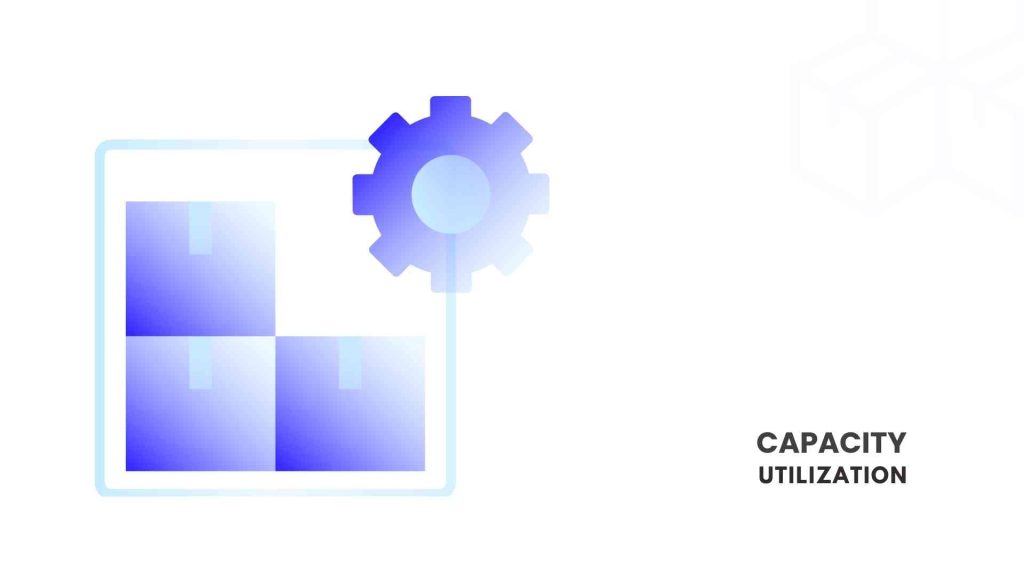Capacity utilization is a fundamental concept in economics and business that measures how efficiently an organization or economy utilizes its productive capacity. It is critical in assessing the performance and health of companies, industries, and even entire economies. We will delve into the meaning of capacity utilization, its importance, how it is calculated, and its implications for various stakeholders.
What Is Capacity Utilization(CU)?
Capacity utilization refers to how an organization, factory, or entire economy uses its production capabilities to meet its production potential. It answers, “How much of our total production capacity are we using?”
Optimal Utilization: When an entity operates at or near full capacity, it optimizes resources. It means it produces goods or services efficiently and is likely more profitable.
Underutilization: If a business or industry operates significantly below its capacity, it is said to be underutilizing its resources. It may result in inefficiencies, lower profits, and indicate a lack of demand or other operational issues.
Why Is Capacity Utilization(CU) Important?
Capacity utilization is an essential indicator of economic health and efficiency, and it has several crucial implications:
Efficiency Assessment: It provides insight into how efficiently an organization or industry operates. High CU generally indicates efficiency, while low utilization may suggest inefficiency.
Economic Indicator: Economists and policymakers use capacity utilization to measure the general health of an economy. High utilization can indicate strong demand and economic growth, while low utilization may signal economic downturns.
Production Planning: Businesses rely on CU data to plan their production, staffing, and resource allocation. It helps them avoid overproduction or underproduction.
Investment Decisions: Investors use CU figures to make informed investment decisions. High utilization may lead to increased profits and investment opportunities.
Policy Decisions: Governments may use this data to design economic policies, especially during periods of economic downturn or recession, to stimulate economic growth.
How Is Capacity Utilization Calculated?
The formula for calculating capacity utilization is relatively straightforward:

Where:
Actual Output: This is the actual production or service output achieved.
Maximum Potential Output: This represents the full production or service output the entity can achieve under ideal conditions.
The result is expressed as a percentage, representing how much of the available capacity is currently used.
Implications of High and Low Capacity
High Capacity Utilization: A high percentage indicates efficient use of resources. It can lead to increased profits but may also pressure resources, potentially leading to wear and tear, higher costs, and potential supply constraints.
Low Capacity Utilization: Low utilization can indicate inefficiency and underutilization of resources and may lead to financial losses, especially if fixed costs are not adequately covered.
Understanding capacity utilization is essential for organizations, economists, and policymakers to effectively make informed decisions and navigate the complex world of production and economics. It delivers useful insights into the health and efficiency of operations, helping businesses and economies thrive in an ever-changing environment.
Acumatica ERP stands as a transformative solution for enhancing CU in manufacturing. By providing real-time insights, optimizing production processes, and streamlining resource allocation, Acumatica empowers manufacturers to make informed decisions, reduce waste, and maximize the efficiency of their operations.
The system’s ability to adapt to the unique needs of different manufacturing environments and its scalability ensures that companies of all sizes can profit from improved CU. With Acumatica ERP, manufacturers are better equipped to meet the demands of today’s competitive market, driving productivity, profitability, and long-term success. Contact us for a Customized ERP solution.
FAQs:
1. What is capacity utilization, and why is it important for businesses?
CU is a measure of how efficiently a business or industry is using its production capacity. It’s important because it indicates how well resources are utilized, which can impact profitability, production planning, and competitiveness.
2. How is capacity utilization calculated?
CU is calculated by dividing the actual output (what a business or industry produces) by the maximum potential output (what it could produce under ideal conditions) and multiplying the result by 100%. The formula is Capacity Utilization = (Actual Output / Maximum Potential Output) * 100%.
3. What are the implications of high capacity utilization for a business?
High CU typically means efficient resource use and can lead to increased profits. However, it may also lead to resource strain, increased costs, and potential supply constraints if not managed properly.
4. What are the consequences of low CU for a business?
Low CU suggests underutilization of resources, leading to financial losses, inefficient operations, and reduced competitiveness. It’s because lack of demand or other operational issues.
5. How does CU affect economic policy and investment decisions?
CU is used by governments to formulate economic policies, particularly during economic downturns. Investors use this data to assess investment opportunities. High utilization can attract investments, while low utilization may indicate the need for stimulus measures to boost economic growth.

Vijay comes with a vast experience in ERP and enterprise solutions space with about 20 years of experience in various packaged application like Acumatica, SAP, Orion, Salesforce.com, SugarCRM and, SalesLogix.

